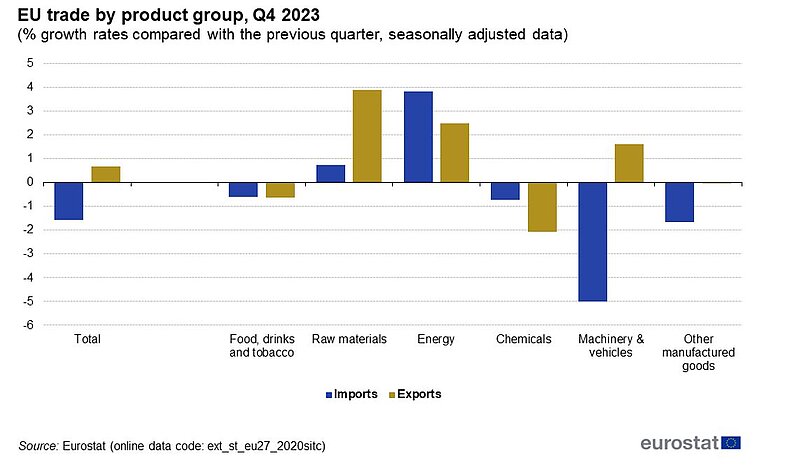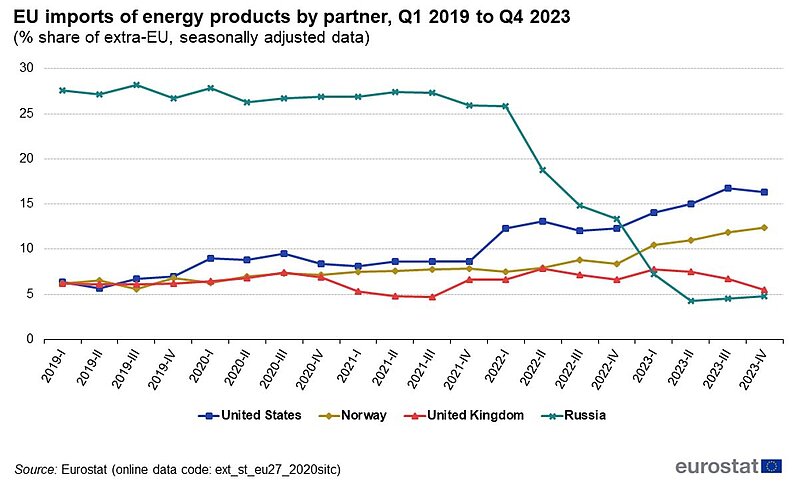Aenert news. Energy Market & Energy Statistics
A snapshot of the European Union (EU) international trade in goods from 2019, based on quarterly data, is presented in an article by Eurostat.
The types of goods traded outside the EU are analysed with a focus on five main partners: China, the United States, the United Kingdom, Switzerland and Russia.
In the last quarter of 2023, imports decreased by 1.6 % compared to the previous quarter, confirming the downward trend of the last five consecutive quarters. In contrast, exports increased by 0.7%, for the first time since the fourth quarter of 2022.
Source: Eurostat
As a result, the EU balance of trade in goods increased from €19 billion in the third quarter of 2023 to €33 billion in the fourth quarter of 2023, while it was in deficit from the fourth quarter of 2021 until the second quarter of 2023.
Looking at the change pattern for each product group in the fourth quarter of 2023 in relation to the previous quarter, the largest decrease in imports was in machinery and vehicles (EUR 10.2 billion, -5.0%) and the largest increase in energy products (EUR 4.9 billion, 3.8%). Exports decreased most in chemicals (€2.7 billion, -2.1%) and increased in machinery and vehicles (€4.1 billion, 1.6%).
The following graph illustrates the impact of Russia's invasion of Ukraine, which has led to changes in the share of imports from major partners, primarily due to sanctions affecting trade in energy products.
In the period between the first quarter of 2022 and the latest trade data for the fourth quarter of 2023, the share of imports from Russia declined by 7.6%, the share of imports from China decreased by 1.9% p.p., while the share of imports from the US (+3.4%) and Switzerland (+0.2%) increased. Data on product exports to these countries show a similar trend.
Until the fourth quarter of 2022, Russia was by far the largest source of energy imports to the EU. In the fourth quarter of 2023, energy imports from Russia, decreased by €37.2 billion compared to the first quarter of 2022 due to the combined effect of lower prices and import restrictions. Already in the first quarter of 2022, the combined share of the United States, Norway and the United Kingdom equalled that of Russia. In the fourth quarter of 2023, Russia's share of energy imports was only one-seventh of the combined share of the United States, Norway and the United Kingdom. By comparison, in the first quarter of 2019, Russia's share was 1.5 times that of the United States, Norway and the United Kingdom combined.
By the Editorial Board
